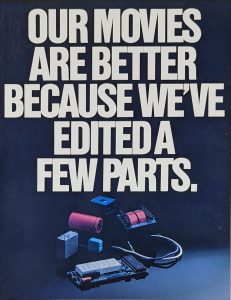Optimizing Multi-Video Graphics
Expanded vision via satellite T.V.
A major satellite T.V. company in the U.S. pay-per-view market had a multi-video graphics system to provide services for hotels and hospitals. The device was controlled by a PC-compatible computer which could be located at, for example, a hotel front desk.
However, the system graphics were inadequate, and the system could not effectively compete within the growing and complex international market.
The company’s engineering staff had limited resources, and they needed someone to take the lead in a complete redesign of the graphics system — including both the custom Color Graphics Adapters (CGA) used for text and graphics generation, and the central location software which controlled the screens.
Solution
MTSI engineers conducted a comprehensive study of the entire system, and followed up with the redesign that the company needed.
When the company began to look to the European market, MTSI was called upon to improve the overall quality of the graphics being generated. In response to the needs of the client’s European customers, engineers specified and designed next-generation equipment with high-resolution graphics and a color palette of 262,144 colors.

Moreover, the graphics system was changed to allow for conversion to USA RS-170 525-line composite video version, British 625-line PAL-I, Continental Europe PAL-G and French SECAM signals (since the system was intended for T.V. screens, not monitors), and the communications software which interacted with the graphics controller was rewritten.
To standardize and expand the system, a PC compatible bus was used as the backplane for the graphics adapter cards instead of the custom backplane previously in use.
A VGA-to-composite video adapter plug was included for connection to Type-F 75 ohm composite video cables.
The Dual Video Graphics Module (Dual-VGA) was also designed to allow for the installation of up to 32 Video Graphics Adapter monitors or television sets to be installed in a single computer. A LAN card and an intelligent serial card handled communications, allowing for a larger number of monitors.
The system’s cards also contained two independent eight or 16-bit bus autoswitch VGA circuits. Each circuit shared a logic circuit and I/O port that allowed any VGA output to be selected and placed in the PC memory map. The I/O registers and memory locations of the VGA controllers were switched simultaneously on all boards.
Up to 16 cards could be addressed by the same range of I/O ports, allowing a single I/O instruction to control all 32 available channels. To use any additional cards simply required using another I/O port. Upon power up, the first VGA on the card 0 was selected as default, and a rotary switch was included to select the card and VGA channel order.
Specifications
- 100% ISA & EISA compatible
- 512 k byte RAM memory on each channel
- VGA compatible registers
- 2 channels per card
- 16 cards at one port maximum,
- 8 or 16 bit slot compatible
- (2) VGA 15 pin-co6nnection
- (2) NTSC or PAL adapter w/Type F RS-170l
- I/O Port 100h-107h standard, addressable to any 8-byte boundary
- Rotary selector switch for setting card number
- VGA ROM BIOS included

Robert Beckhusen
Robert Beckhusen is a case studies and content marketing editor for Micro Technology Services.
